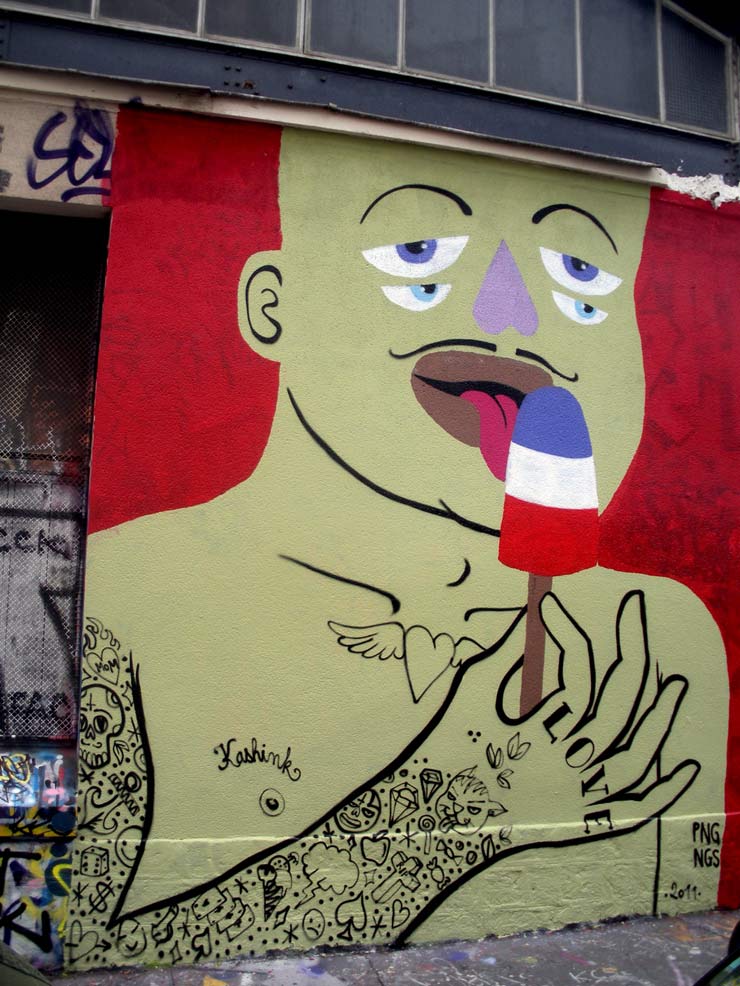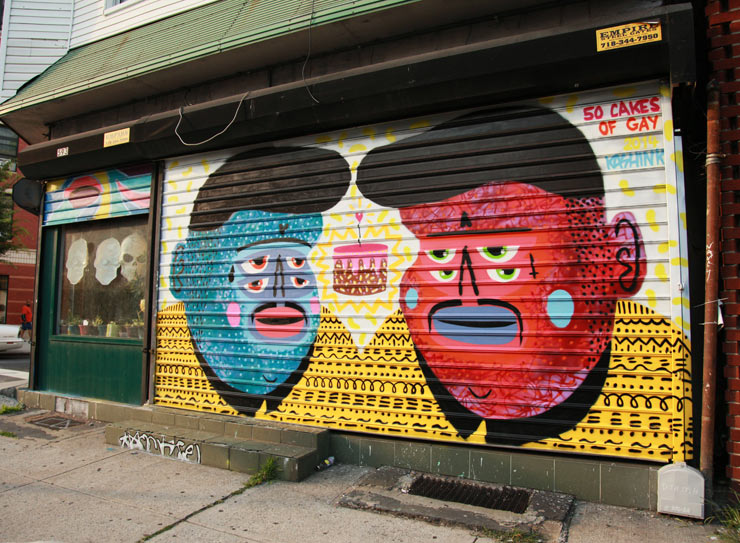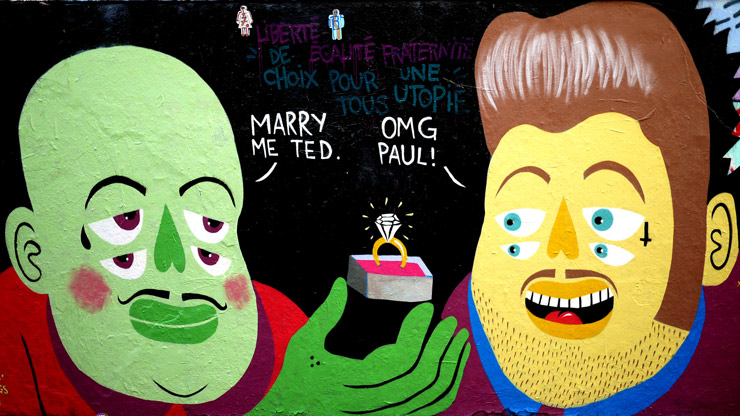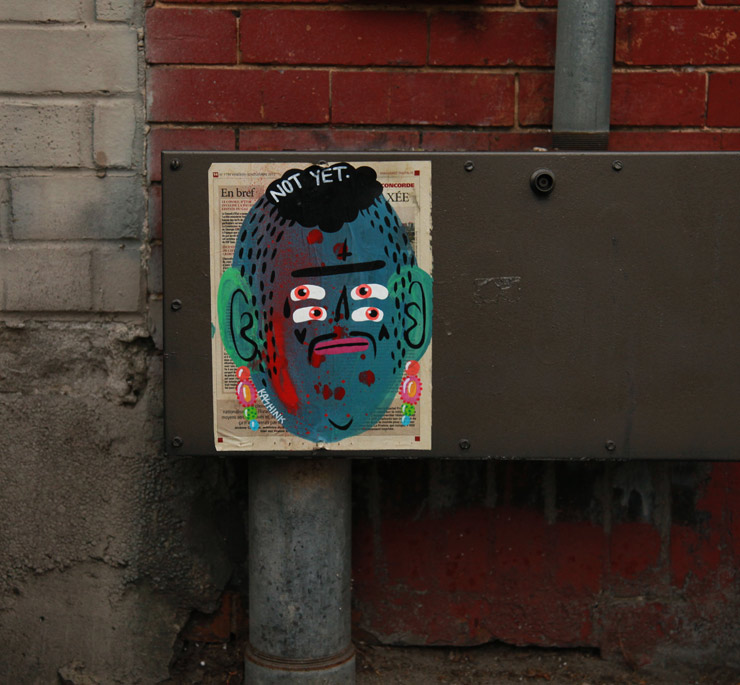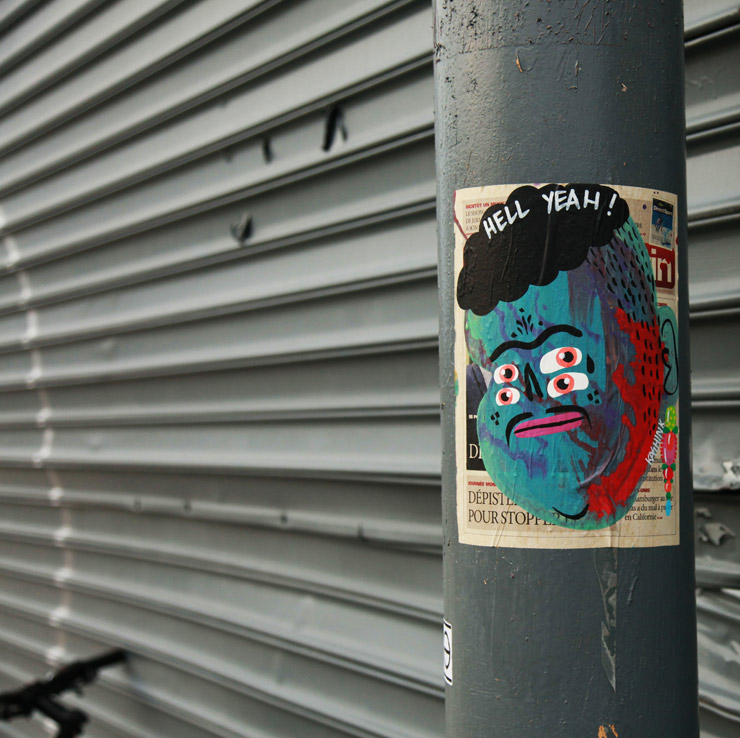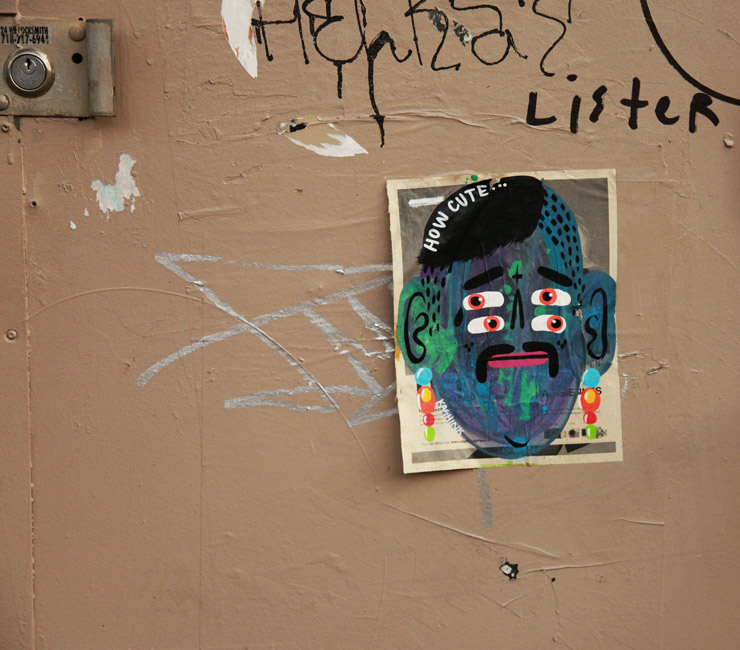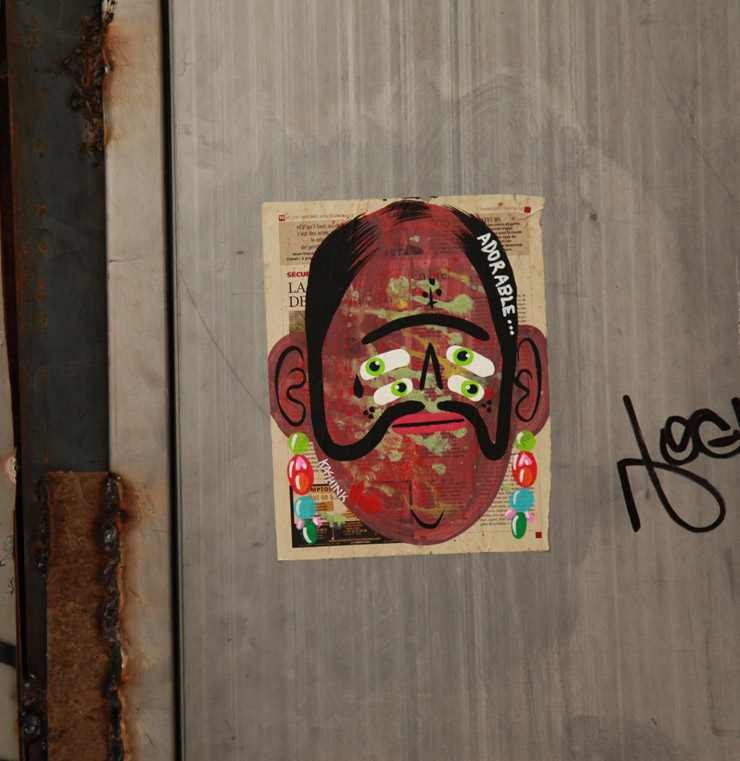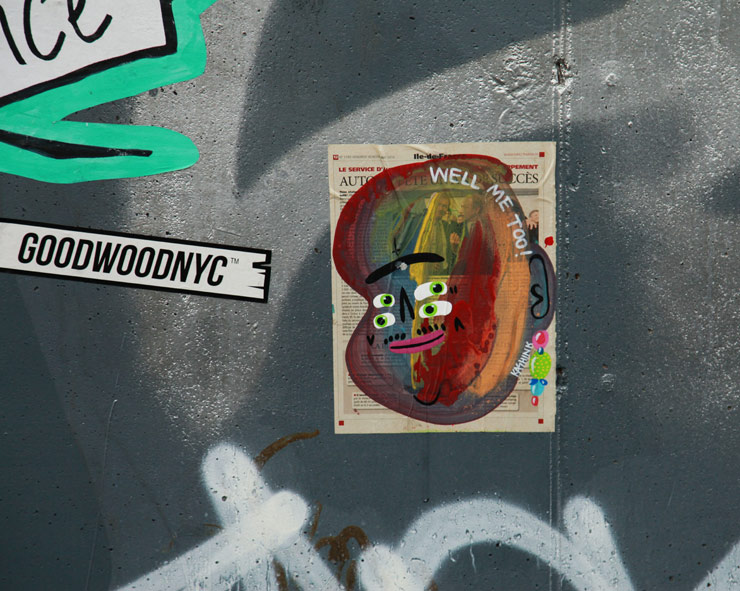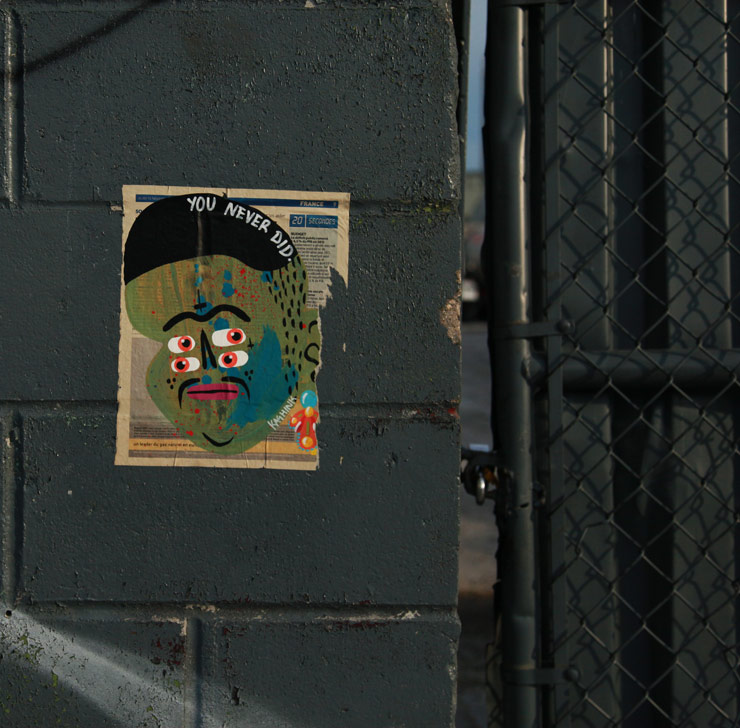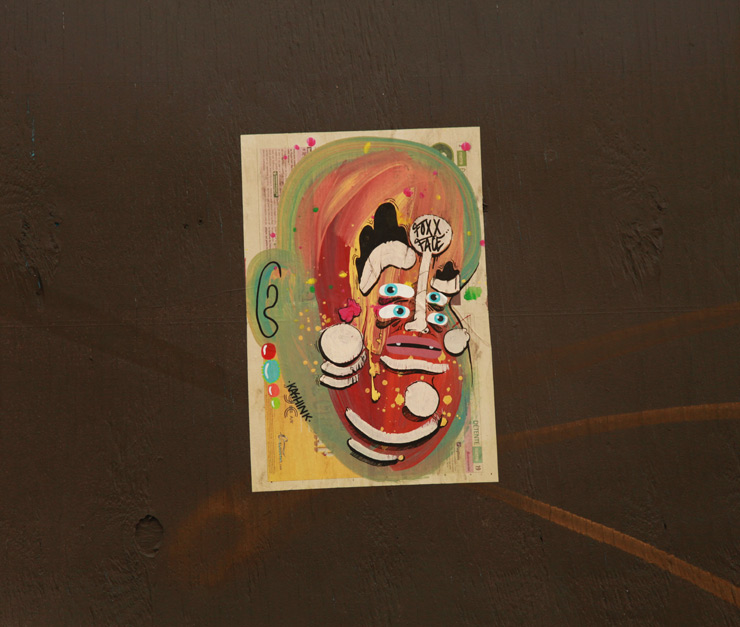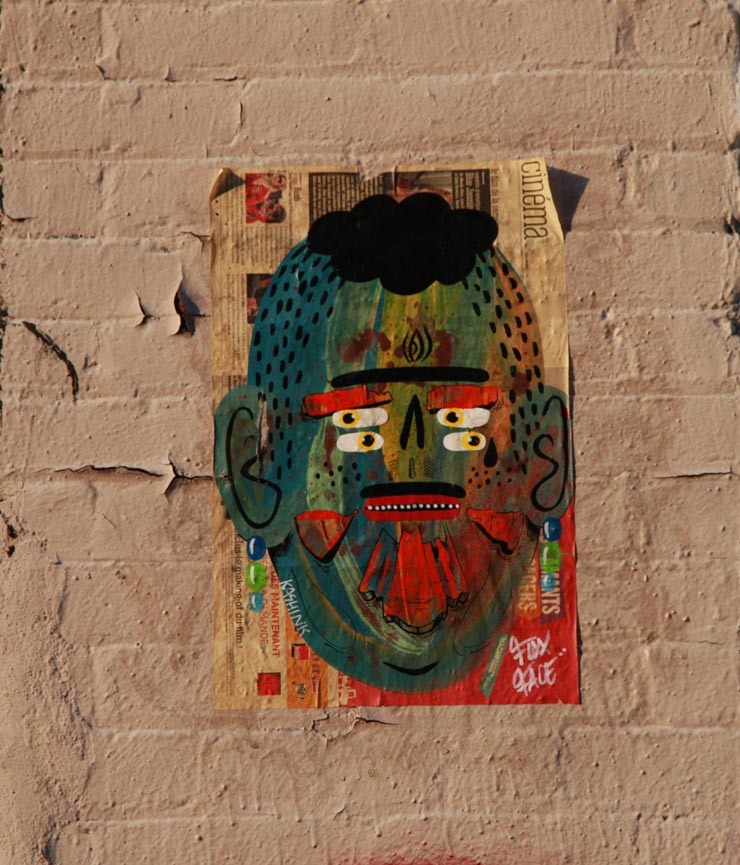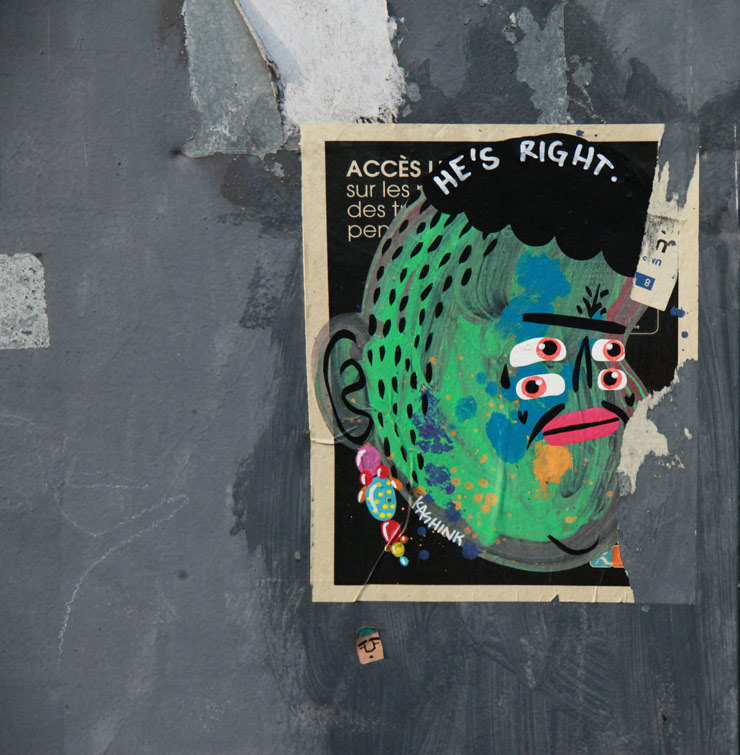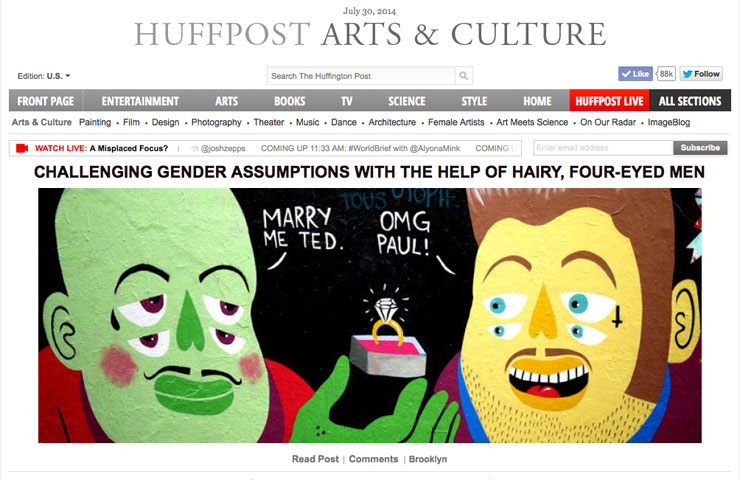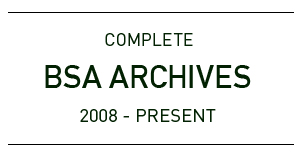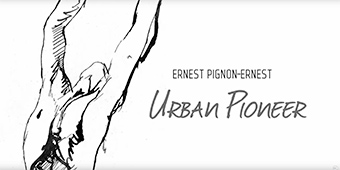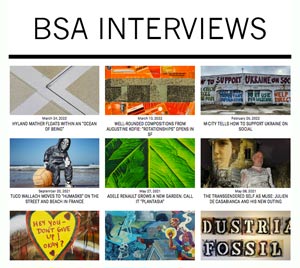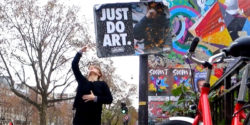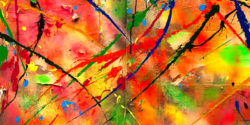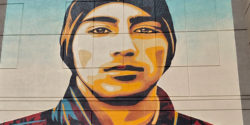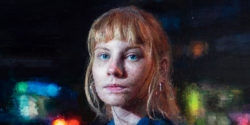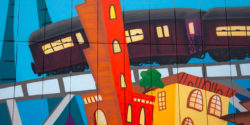The international Street Art scene boasts a small percentage of women artists and KASHINK may perplex even that statistic with her mustache. It’s the same mustache you’ll see on many of her big hairy four-eyed men that she paints in Europe and North America that look like “badass yet sensitive gangsters,” as she describes them. Similarly, her own mustache is drawn on with a marker or paint brush. It’s the absurdity of gender role-play that she likes to examine in her colorful comical way and the Paris-based KASHINK says she considers her street art to be an expression of activism that questions it.
Kashink (photo © Jaime Rojo)
With the same vivid colors and absurdly intelligent wit that Gilbert and George might use to make fun, KASHINK takes her paintings into a folkloric milieu and adds superhero flatness, depicting her (mostly) men as probably well-meaning dolts, if also conflicted and sensitive. As with most comedy there may be a critique as well.
As an activist the artist has lent her art and her support in a very big and public way to the cause of Marriage Equality in France, where hundreds of thousands of angry anti-gay marchers thronged through the streets to stop its passage. With characteristic wittiness (and fortitude) KASHINK created nearly 200 murals depicting many a gay couple gazing dreamily at one another over a big ornate wedding cake; a series she humorously named “50 Cakes of Gay”.
Kashink. ActUp. Paris, France. (photo © Kashink)
Recently in New York, a number of her men showed up on walls on the street, and we had the opportunity ask her some questions about optimism, gender conventions, the French love for old skool graffiti and hip-hop, and those two black marker lines above her lip.
Brooklyn Street Art: Your characters have similarities to illustrations found in comic books from the thick lines and bold colors to multiple eyes and the comedic sense they have. Even your name “KASHINK” has a comic book sound. Did you hide in the attic with a stack of comic books when you were a child?
KASHINK: KASHINK is definitely onomatopoeic; I’ve always been fond of comic books. In France there is was always a really big scene and as a teenager I was also into American superheroes as well.
I still buy comics and illustrations and I have a lot of comic book artist friends. I recently painted a wall with JANO, an old school artist who was very famous in France the 80’s; I loved his work when I was a kid. It was pretty cool to teach him how to spray-paint!
I guess I got inspired a lot by all these, but I also get inspired by traditional crafts from around the world. These thick lines and bright colors are quite similar in many different countries.
Kashink. Paris, France 2011. (photo © Kashink)
Brooklyn Street Art: Speaking of gender, most (all?) of the characters you create are male, and many have a mustache like yours. Societies have experimented with the fluidity of gender and roles over history. Are you continuing that experimentation?
KASHINK: When I started painting walls, I quickly decided not to paint women. It seemed really complicated to me to paint a female character free from any kind of aesthetic codes. I also noticed that there was a strong tradition of female street artists painting really sexy female characters, and I didn’t relate to that trend, I wanted to do something more personal somehow.
I’ve always been interested in the absurdity of gender representation. Since I was a kid I always felt like a tomboy but I also loved to get dolled up and look nice, in my own style.
I’m very interested in the amazing diversity of humanity, and how easy it is to break the codes in a fun way. The characters I paint are mostly male, preferably fat and hairy. Even though they look quite manly I like to put them in unexpected situations where they would express their feelings. They fall in love, they call their mom on the phone, they are sad or scared. It’s just a funnier and more meaningful experimentation than another representation of a tough female.
Kashink (photo © Jaime Rojo)
Brooklyn Street Art: There are some references to queer culture in your art. Would you describe any of your work as “activist” in nature? Or are you just depicting life/imagination?
KASHINK: I’m an activist, not only as an artist but also as a person. This moustache I wear every day is the best example I guess. I think it’s fun to underline the absurdity of traditional female make up. Two black symmetrical lines as eyebrows or eyeliner are perfectly accepted, but the same lines 4 inches lower on the same face are not. I also like the idea of playing with this very old school typically male ornamentation code.
My personal life and my tendency to paint sensitive big hairy guys also led me to paint gay men in obvious situations. In 2011 I even had a solo show I called GAYFFITI. Then I worked with Act Up for a little bit and started painting walls related to gay marriage and equal rights. In December 2012, the first protests started in Paris. It was very shocking to see all this aggressiveness and all the energy some people were ready to put in order for other people not to have rights, especially in France.
I thought it was interesting to start using a strong symbol that anybody could understand and relate to positive memories. Everybody loves cake. So I started my project “50 Cakes of Gay”. At first I thought I’d paint only 50 in total but I’ve been painting more than 200 now in 9 different countries, and there are more to come!
Kashink (photo © Jaime Rojo)
Brooklyn Street Art: Where did the text come from that appears on the new series of hand painted posters you put up in Brooklyn recently? News headlines? Songs? Stories?
KASHINK: I’ve been adding text to my characters for a while. Especially on these paste-ups I call “The Johns”. I like the idea of starting a story and encouraging people’s imagination. These phrases could be interpreted in many ways; they could all be part of very different stories, like a part of a comic book. Sometimes they also are lyrics of my favorite songs, depending on my inspiration.
I’ve been wheat pasting those for a little while, and when I visit a different country I write the text in the local language. I did some in French of course, but also some in Polish, Greek, Arabic and Basque for example.
Kashink with Lister hovering. (photo © Jaime Rojo)
Brooklyn Street Art: Why is it valuable to put art in public spaces?
KASHINK: Well I guess we need to keep in mind it’s not valuable for everybody. Some people are not that interested in art and don’t really see the point. As an artist, I like the idea of sharing my stuff and make it visible, it’s a good way for me to share my ideas as well; in that way it seems valuable to me at least.
Kashink (photo © Jaime Rojo)
Brooklyn Street Art: Your drawings appear very optimistic and full of color. Would you describe yourself as generally optimistic?
KASHINK: I’m definitely an optimistic person. I realized recently that since I was born I’ve constantly heard about deforestation, pollution, ozone holes, economic crisis, unemployment, and all kinds of disasters.
I think that nowadays we’re at the crossroads of our history, many things changed drastically in the past 50 years and it’s going faster and faster. I’m very curious about the coming next 10 or 20 years, and I don’t want to be pessimistic. Of course we’re all going to die, but I want to believe things can also evolve in a good way somehow.
I see more and more people who want a better quality of life, who quit a job they hate for something else, where they might get less money but a better environment.
There are more and more people of our generation who are not interested in consumerism, who don’t want a TV, who try to think for themselves. It’s pretty interesting.
Kashink (photo © Jaime Rojo)
Brooklyn Street Art: Many French art fans are very loyal and enthusiastic followers of the original 70s/80s New York graffiti artists and hip hop scene. Growing up in Paris, did graffiti culture interest you as well?
KASHINK: I guess that the French hip-hop scene has probably been the biggest in Europe. I grew up in what they call “la banlieue”, and I would take the train to go to Paris. The tracks were covered in throw ups, and in the city there always was a lot of tagging. I was attracted to graffiti and to the music as well, I remember when the Wu Tang started being known in France, I also liked Onyx and A Tribe Called Quest a lot. But I was a metal head, and back then it was weird to like both in France.
When the original soundtrack of “Judgment Night” came out, I was thrilled to see that my favorite metal bands and rappers could collaborate. It was awesome !!! Then Ice T came out with “Body Count,” which was very exciting too.
But I guess I was already more attracted to characters than styles back then. I remember seeing some pieces from Honet when I would go to Paris as a teenager; they were very different from what I was used to, in a way I got inspired by his style.
Kashink (photo © Jaime Rojo)
Brooklyn Street Art: Last year we did an extensive article on Wynwood and its first all-female artists edition. How was your experience in Miami painting along such an internationally known group of intelligent, talented, opinionated and fun-loving women?
KASHINK: Being in that show was an amazing opportunity, it was also very cool for me to get to meet all these great artists. I was actually very curious to ask them about how it feels to be in that game for a longer period of time. Most of them are older than me and some got tired of painting walls after a while, some others still paint but not necessarily only their own stuff. I spent a few hours smoking spliffs with Lady Pink on the roof of our hotel and asking her about all this, it was really interesting.
Kashink collaboration with Foxx Face (photo © Jaime Rojo)
Kashink collaboration with Foxx Face (photo © Jaime Rojo)
Kashink with CB23 trying to pass unnoticed on the bottom. (photo © Jaime Rojo)
<<>>><><<>BSA<<>>><<<>><><BSA<<>>><><<>BSA<<>>><<<>><><BSA Please note: All content including images and text are © BrooklynStreetArt.com, unless otherwise noted. We like sharing BSA content for non-commercial purposes as long as you credit the photographer(s) and BSA, include a link to the original article URL and do not remove the photographer’s name from the .jpg file. Otherwise, please refrain from re-posting. Thanks! <<>>><><<>BSA<<>>><<<>><><BSA<<>>><><<>BSA<<>>><<<>><><BSA
This article is also published on The Huffington Post.
Other Articles You May Like from BSA:
Today is Marathon Day in New York City and the leaves on the trees have turned to oranges and reds and yellows to welcome the 26,000 people running through all five boroughs. In two days right ...
f Our weekly focus on the moving image and art in the streets. And other oddities. Now screening : 1. Graffiti on the Berlin U Bahn 12. SWOON'S "CICADA" Opened at Deitch Projects 3. Hedof &...
Education should not be out of reach. Without it people are captives, especially when technology and resources are kept just beyond your grasp. Bluntly stated, keeping entire populations and countries...
There is a good amount of delusion and illusion being proferred in these near-hysteric times. Take a breath, stay grounded, and look for something positive. Stick to the facts, and accept them fo...
From environmental nightmares to the corporate war machine to social solidarity to identity politics to abortion to the isolation brought on by Covid, the muralists at the MEMUR Festival in Oldenburg...
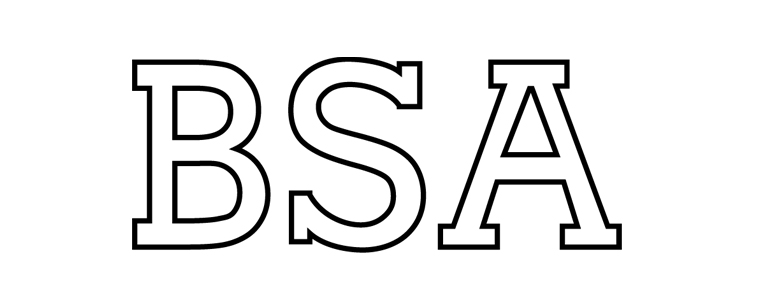 BROOKLYN STREET ART LOVES YOU MORE EVERY DAY
BROOKLYN STREET ART LOVES YOU MORE EVERY DAY